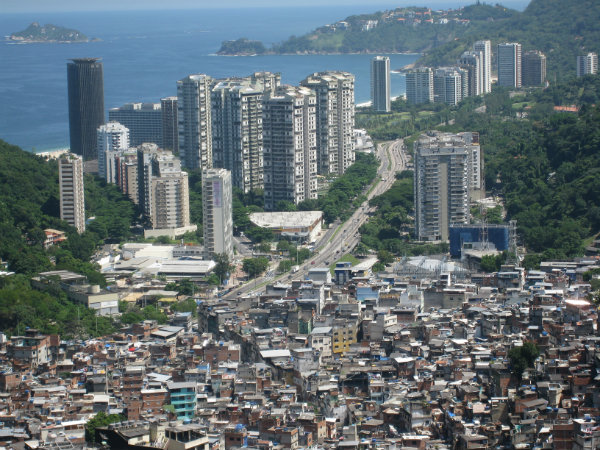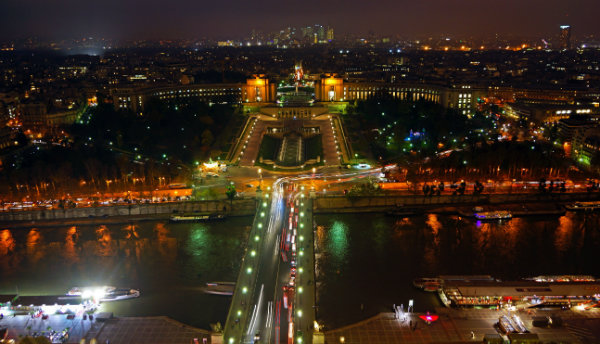
- Geography India - Introduction
- Geography India - Physical Aspect
- Geography India - Drainage System
- Geography India - Climate
- Geography India - Natural Vegetation
- Geography India - National Forest
- Geography India - Wildlife
- Geography India - Soil
- Geography India - Land Resources
- Geography India - Agriculture
- Geography India - Mineral Resources
- Geography India - Energy Resources
- Geography India - Industry
- Geography India - Transport
- Geography India - Communication
- Geography India - Foreign Trade
- Geography India - The People
- Geography India - Settlement
- Geography India - Migration
- Regional Development
- Geography India - Disasters
- Geography of the World
- Geography World - Introduction
- Evolution of the Earth
- Geography World - Climate
- Geography World - Transport
- Geography World - Communications
- Geography World - Population
- Human Settlement
- Human Development
- International Trade
- Geography Useful Resources
- Geography - Online Quiz
- Geography - Online Test
- Geography - Quick Guide
- Geography - Useful Resources
- Geography - Discussion
Geography World - Human Settlement
Introduction
Human settlements can be permanent or seasonal/temporary; rural or urban.
The process of people moving away from congested urban areas to cleaner areas outside the city in search of a better quality of living is known as sub-urbanization.

1991 census of India defines urban settlements as All places which have municipality, corporation, cantonment board or notified town area committee and have a minimum population of 5000 persons, at least 75 per cent of male workers are engaged in non-agricultural pursuits and a density of population of at least 400 persons per square kilometers are urban.
Classification of Settlement
The settlement largely dependent on primary sector activities such as agriculture, animal husbandry, fishing etc. is known as rural settlement.
Major factors that shape the rural settlement are water supply, fertile lands, relief features, building materials, etc.
-
On the basis of forms or shapes of the settlements, rural settlements are classified as −
Linear,
Rectangular,
Circular,
Star like,
T-shaped village,
Y-shaped village,
Compact,
Disperse,
Planned, etc.
The settlement in which houses are constructed along a road, railway line, river, canal edge of a valley, or along a levee is known as Linear Pattern.
The settlements in which houses are constructed in a rectangular shape is known as Rectangular Pattern. Such kind of settlements is found in plain areas or/and in wide inter-montane valley.
The settlements in which houses are constructed in a circular shape is known as Circular Pattern. Such kind of settlements is found around lakes, tanks, or a planned village.
The settlements in which houses are constructed in a star shape is known as Star like Pattern. Such kind of settlements is found around the points where several roads cross each other (making star shape).
The settlements in which houses are constructed at the tri-junctions of the roads is known as T-shaped Pattern. Such kind of settlements is found along the road, which meets with another road at the dead end (the straight going road ends) and bifurcates left and right (T-Shape).
The settlement in which houses are constructed along the straight going road, which further bifurcates into two roads (similar to Y shape) is known as Y-Shape pattern.
-
Based on shape, the settlements are classified as −
Compact or Nucleated Settlements − Under such type of settlements, the houses are built very close to each other. Normally, plain fertile land regions have such compact or nucleated settlements.
Dispersed Settlements − In such kind of settlements, houses are spaced far apart and often interspersed with fields; however, their market and some other activities are centralized where they participate together.
Planned settlements are the settlements that planned and constructed by the government; governments provides shelter, water, and other infrastructures on acquired lands.
Problems of Rural Settlements
Major problems of rural settlements are the lack of basic amenities (such as toilet facility, sanitation facility, health facilities, education facilities, etc.) and other infrastructure such as rail, road, tele-communications, etc.
The first urban settlement that crossed one million mark was the city of London (around AD 1810) and by the end of 1982, approximately 175 cities in the world had crossed the one million population mark.
The following image illustrates London in 1900 −

Classification of Urban Settlement
-
Depending upon the functionality of the urban settlement, towns are classified as −
Administrative Towns,
Commercial Towns,
Cultural Towns,
Recreational Towns, and
Industrial Towns.
The settlements that established for the administrative purpose or having largely administrative function are known as administrative towns. For example, such as Washington D.C., New Delhi, Canberra, Paris, Beijing, Addis Ababa, and London etc.
The settlements that facilitate commercial opportunities are known as trading and commercial towns. For example, Agra, Lahore, Baghdad as an important transport node; Manchester and St Louis in land centers; Winnipeg and Kansas City as agricultural market towns; Frankfurt and Amsterdam as banking and financial centers; etc.
The settlements established because of religious adherence are known as cultural or religious towns. For example, Jerusalem, Mecca, Jagannath Puri, Madurai, and Varanasi etc.
The settlements established for the recreational purpose are known as recreational towns. For example, Miami, Panaji, etc.
The settlements established because of industrial development are known as industrial towns. For example, Pittsburgh, Jamshedpur, etc.
Other Facts
The name Addis Ababa, capital of Ethiopia, indicates (as Addis means New and Ababa means Flower) as a new city, which was established in 1878.
Canberra was planned as the capital of Australia in 1912 by an American landscape architect, Walter Burley Griffin.

Depending on the size and the services available and functions rendered, urban centers are categorized as town, city, million city, conurbation and megalopolis (shown in the image given above).
Town is the smallest point in the hierarchy of urban settlements; its population is comparatively greater than the village as well as its functionality is to serve as the market and other professional services to the villagers.
Cities are much larger than towns and have a greater number of economic functions.
The cities tend to have transport terminals, major financial institutions, and regional administrative offices.
The cities with a population of more than one million are known as million cities.
The term conurbation was coined by Patrick Geddes in 1915 for a large area of urban development that resulted from the merging of two or more independent towns or cities. For example, Greater London, Manchester, Chicago, and Tokyo.
Used by Jean Gottman in 1957, Megalopolis is a Greek word meaning great city.
Megalopolis signifies super-metropolitan region extending, as union of conurbations. For example, the urban landscape stretching from Boston in the north to south of Washington DC.